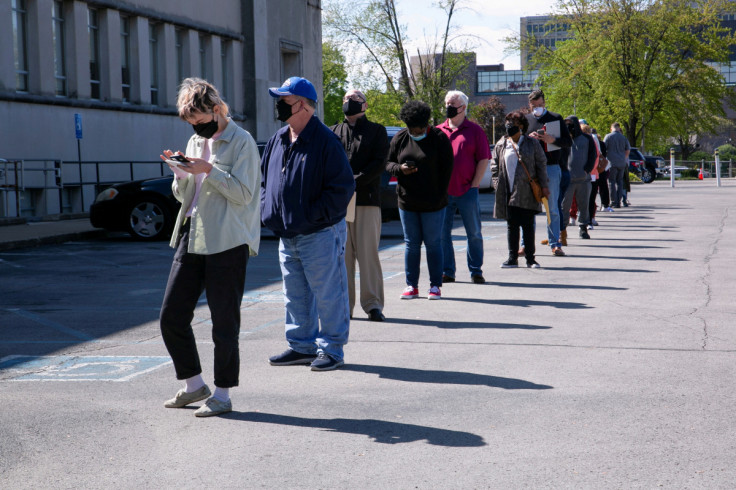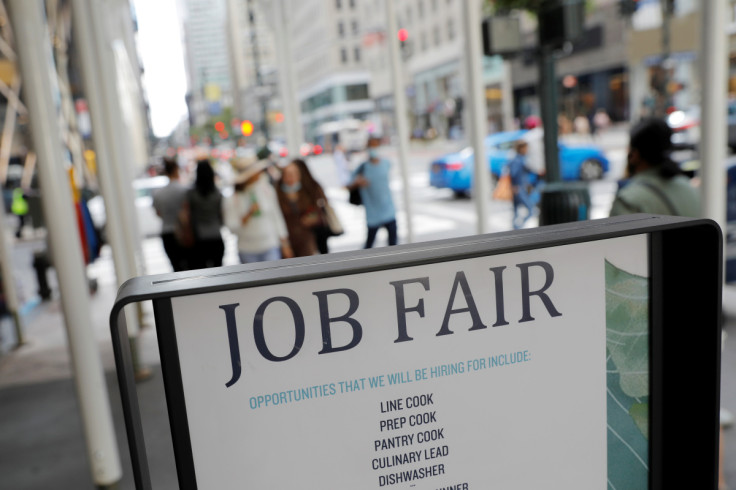U.S. Weekly Jobless Claims Rise Moderately As Labor Market Remains Resilient

The number of Americans filing new claims for unemployment benefits increased moderately last week, indicating the labor market remains tight despite the Federal Reserve's attempt to cool demand with aggressive interest rate increases.
The weekly unemployment claims report from the Labor Department on Thursday, the most timely data on the economy's health, suggested that job growth remained solid this month. The U.S. central bank delivered a 75-basis-point rate hike on Wednesday, its third straight increase of that magnitude. It signaled more large increases to come this year.
"Fed officials are hitting the brakes hard, but so far employers are just giving this policy a great, big yawn and holding on tight to their workers," said Christopher Rupkey, chief economist at FWDBONDS. "It's either that or there is some sort of stealth job losses where those made redundant are not getting unemployment benefits."
Initial claims for state unemployment benefits rose 5,000 to a seasonally adjusted 213,000 for the week ended Sept. 17, the Labor Department said on Thursday. Data for the prior week was revised to show 5,000 fewer applications filed than previously reported. Economists polled by Reuters had forecast 218,000 applications for the latest week.
Fed Chair Jerome Powell told reporters on Wednesday that "there's only modest evidence that the labor market is cooling off," describing it as continuing "to be out of balance."
Since March, the Fed has raised its policy rate by three percentage points to the current range of 3.00% to 3.25%.
Unadjusted claims rose 19,385 to a still-low 171,562 last week. There was a surge in applications in Michigan and notable increases in California, Georgia, Massachusetts and New York. Only Indiana reported a significant decrease in filings.
Economists say companies are hoarding workers after experiencing difficulties hiring in the past year as the COVID-19 pandemic forced some people out of the workforce, in part because of prolonged illness caused by the virus.
There were 11.2 million job openings at the end of July, with two jobs for every unemployed person.
U.S. stocks opened lower. The dollar rose against a basket of currencies. U.S. Treasury prices fell.
NO MATERIAL CHANGE
The claims report covered the period during which the government surveyed businesses for the nonfarm payrolls portion of September's employment report.
Applications fell 32,000 between the August and September survey periods. Payrolls increased by 315,000 jobs in August. Employment is now 240,000 jobs above its pre-pandemic level.
"There are no signs here of a change in labor market fundamentals," said Conrad DeQuadros, senior economic advisor at Brean Capital in New York.
The number of people receiving benefits after an initial week of aid decreased 22,000 to 1.379 million in the week ending Sept. 10. Data next week on the so-called continuing claims, a proxy for hiring, will shed more light on September's employment picture.
The Fed on Wednesday raised its median forecast for the unemployment rate this year to 3.8% from its previous forecast of 3.7% in June. It boosted its estimate for 2023 to 4.4% from the 3.9% projected in June, a move that economists viewed as recessionary. The jobless rate rose to 3.7% in August from 3.5% in July.
"Historically, an increase in the unemployment rate of this magnitude over a year has been followed by a recession," said Ryan Sweet, a senior economist at Moody's Analytics in West Chester, Pennsylvania. "The jury is still out on whether the Fed can pull off a soft landing."

© Copyright Thomson Reuters 2024. All rights reserved.











